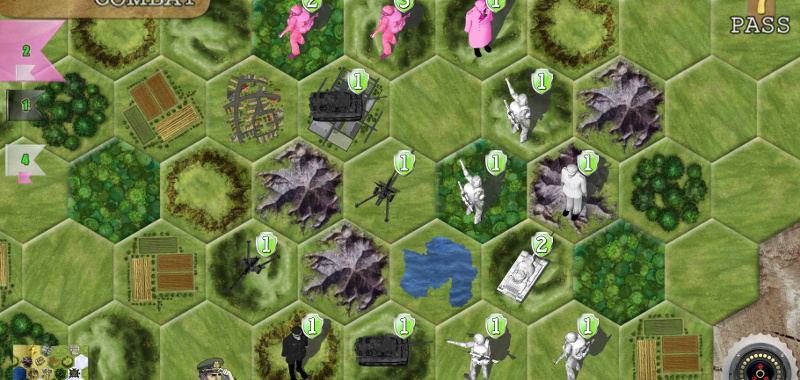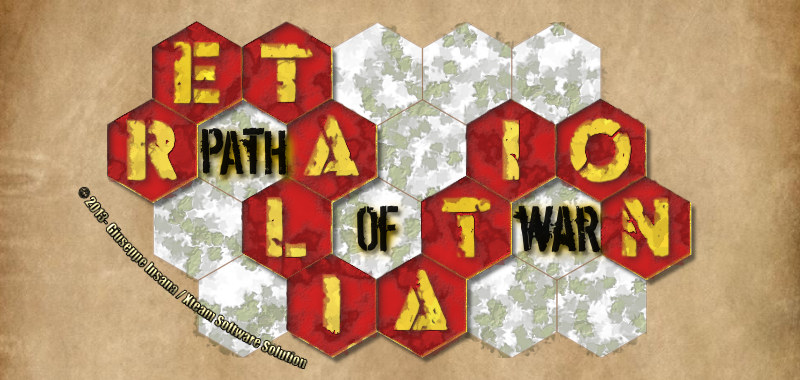Reference :: Game Variants
Note: you can use keyboard to navigate: arrows to move and space or enter to open/collapse sections
Retaliation can be played in three very different ways, which mostly affect the way in which combat is handled, and in particular the influence of luck in the game.
Boardgame: Roll dice to attack
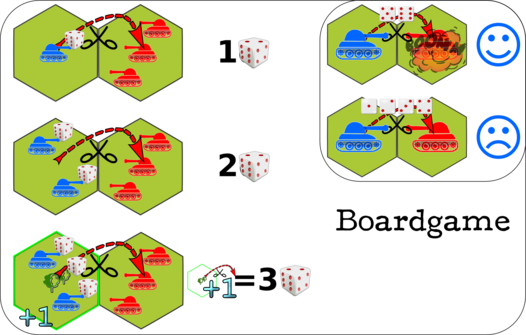
The original mode from the physical board game. Initiative, combat and river crossing attempts are all handled by rolling the dice.
Attacks are easier to understand but also clear-cut: either you hit (and destroy a tank) or you don't (and no damage is inflicted), with no middle way
Combat modifiers change the number of dice rolled
Videogamer: Just fire at will
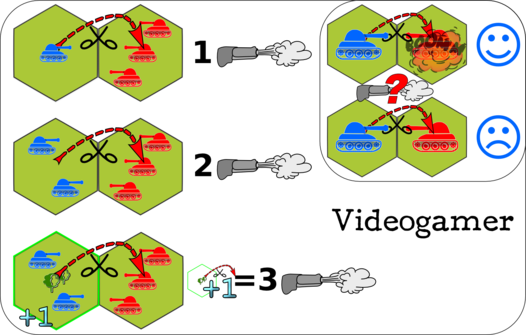
There are no dice to roll and combat results are smoother: shots always do inflict a certain amount of damage, which could be small or large.
Combat modifiers change the number of shots fired, hence hitting more enemy tanks at the same time and increasing the chances of destruction
No Luck: Compute the outcomes
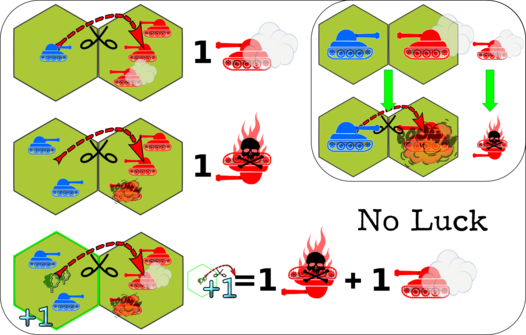
All combat results are deterministic, so battle outcomes can be predicted.
The amount of your tanks plus/minus all modifiers equals the number of shots fired. Every two shots fired, one enemy tank gets destroyed. In case of an odd number of shots, an enemy tank gets only damaged.
Comparison of combat damage for the three variants
Armour units are composed of a number of tanks ranging from 1 to 6. If we consider each single tank belonging to a unit having a total of 10 "hit points", we can compare Retaliation's three game variants according to the damage inflicted during combat:
- Boardgame: in each attack roll, dice results of ⚄ or ⚅ inflict 10 hitpoints (and hence would destroy an enemy tank), while all other dice results inflict 0 hitpoints. The n highest results are selected for each attack roll, with n being the number of tanks belonging to the enemy unit under attack. The more dice are rolled (for example due to many positive combat modifiers), the higher is the chance to have successful (⚄ or ⚅) results and hence to destroy the enemy tanks.
- Videogamer: all shots fired inflict a certain amount damage, sometimes small, sometimes large. The damage that each shot fired would inflict is randomly chosen from the set "1,2,4,6,9,12" (simulating a differential accuracy or "effect on target"). The n highest damages are selected and inflicted, with n being the number of tanks belonging to the enemy under attack. The more shots are fired, the higher is the chance of larger damage and hence of destroying enemy tanks. If the targeted tanks are not immediately destroyed, their hit points are decreased accordingly, thus making them easier to destroy (higher probability) during following attacks.
- No Luck: all shots fired inflict 5 hit points. Thus for every two shots fired, an enemy tank gets destroyed, while one single shot would only damage it. In case an enemy tank is already damaged (and hence we can think of it as having 5 hit points left), a single shot would destroy it. The more shots are fired (e.g. because of many positive combat modifiers), the more tanks are destroyed.




